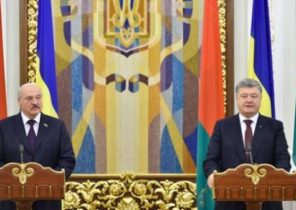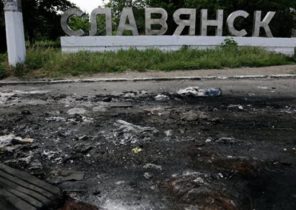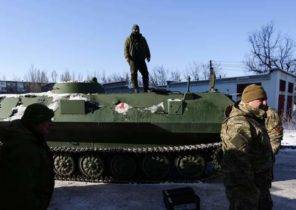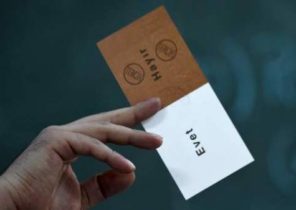Most popular manga “war has no female face” — a collection of stories of Soviet women who fought during the Second world war. It is based on the book “war has no female face”, which was written by journalist Svetlana Alexievich, awarded the Nobel prize for literature in 2015.
【更新情報】”戦争は女の顔をしていない”第10話を公開しました。最新のコミックス情報も!#コミックウォーカー
▼今すぐ読む!https://t.co/NfxyrfNGNE pic.twitter.com/HrLAltKdcI
— コミックウォーカーComicWalker (@COMIC_WALKER) June 27, 2020
The first manga was released in January this year, the 75th anniversary of the end of the Second world war. Just over a month had sold more than 100 thousand copies. It is most unusual that the work of the war became a hit. Because of this from the shelves was gone, and the book Alexievich.
Why such interest was caused by the Soviet-German war, which in Japan is not very familiar, and stories that narrate the participants?
This tells the editor of the publishing house of Kentaro Ogino (Ogino Kentaro).
The Soviet-German war is a war waged by Nazi Germany and the USSR in the period from 1941 to 1945. Sacrifices on the part of the Soviet Union has reached 27 million people. Amid relentless fighting in the USSR, expressed a wish to go to the front more than a million women. They were not only physicians and nurses, many fought on the front lines as snipers and pilots.
About the book “war has no female face” became known in 1984. In a few years, since 1978, a Belarusian journalist Alexievich has collected stories of over 500 women. In authoritarian Belarus President criticized her work, saying that it denigrates home. For a long time to publish the book was banned. In Japan it came out in 2008.
“In this corner of the world”
“Initially, I thought that manga needs to issue not from the point of view of sales, and from the point of view of cultural values. But suddenly she began to sell well, and it surprised me”, — frankly said independent editor Ogino, the originator of the idea to make books manga.
He felt that the trend has changed in 2016. Then the military released a cartoon “In this corner of the world” has become very popular. It was created based on the eponymous manga by Fumie Kono (Kono Fumiyo) and tells about the life during the Pacific war married girls from the town of Kure (Hiroshima Prefecture), where is the military port.
Directed by Sunao Katabuchi (Sunao Katabuchi) reproduced the real life during the war on the basis of a careful study of the documents of those years cards and. His work caused a serious resonance in the society.
“He’s very well portrayed the atmosphere and feelings of the people, their everyday life during the war. Such scruples characteristic of the scientist. I thought that such works will not be sold, but it caused a response in the hearts of many people. I felt that the Japanese audience has enough depth to accept and support this work,” said Ogino.
He believes that changing the style of the image of war, and required readers: “If we talk about manga or anime, the last 30 — 40 years the characters were “Barefoot Gen” and “Grave of fireflies”. This is undoubtedly a brilliant work, but I was worried about the lack of development. In them the emphasis is on the position of the victim, and an obvious anti-war message, but at the time, the Japanese supported the war and felt this emotional high. I also believe that it is impossible to forget and the atmosphere of the threat of going to war. In this sense, “In this corner of the world” impartially reports the trends of the era. There are some common features in “war has no female face”. I think this new manga is says about the war.”
In August 2017, I was invited to the project Illustrator Keito of Coma (Keito of Coma) and offered it to the publishing house “Kadokawa”. In January 2018, it gave the green light. The preparation took more than a year. Since April of 2019 began to publish one episode per month. In January, the manga became so popular that it disappeared from the shelves of some bookstores.
The first episode is about Laundry unit
In the first episode tells the story of the Laundry unit. In the places of dislocation of military units of the women washed the form of soldiers. It was extremely heavy manual labor. Some women have had hernias due to carrying heavy wet items. Because soap had eczema and exfoliate the nails.
Nevertheless, it was fun and memories: in retaliation the soldiers, who mockingly called women laundresses, they danced the night away with full makeup. “To show the ordinariness of the war, we thought we should start with the Laundry unit, which together had fun, despite the difficult conditions,” says Ogino.
In the last episode of the first volume depicted a scene where the author cried during the conversation with the participant of events. She asked the former sniper that was the most terrible in the war. She said to wear a jockstrap. On the front was not lingerie, so four years had to wear men’s long boxers. The woman said that it is difficult to put it into words, but it was unpleasant. Ogino argues: “Perhaps a former sniper myself do not really understand, but maybe the author was crying because of the fact that I understood how it humiliated the dignity of women”.
Special attention in the manga is given to devotion to the original book and historical research. Regarding the latter, for help addressed to the artist-the multiplier Hayami Rosanjin (HayamiRasenjin) who is well versed in Russian and Soviet history wars. The most plausible we have reproduced uniforms, equipment and other items.
“Looks like our utterly serious attitude passed on to readers. First, the content itself is heavy. In addition, the building is also non-trivial, and to realize all this takes time. Now readers had a desire to refresh your historical knowledge. They need something “white and fluffy”, and materials “witty”,” — emphasizes Ogino.
The second volume is due out this year. Also prepared the translations into English, Russian and other languages.





